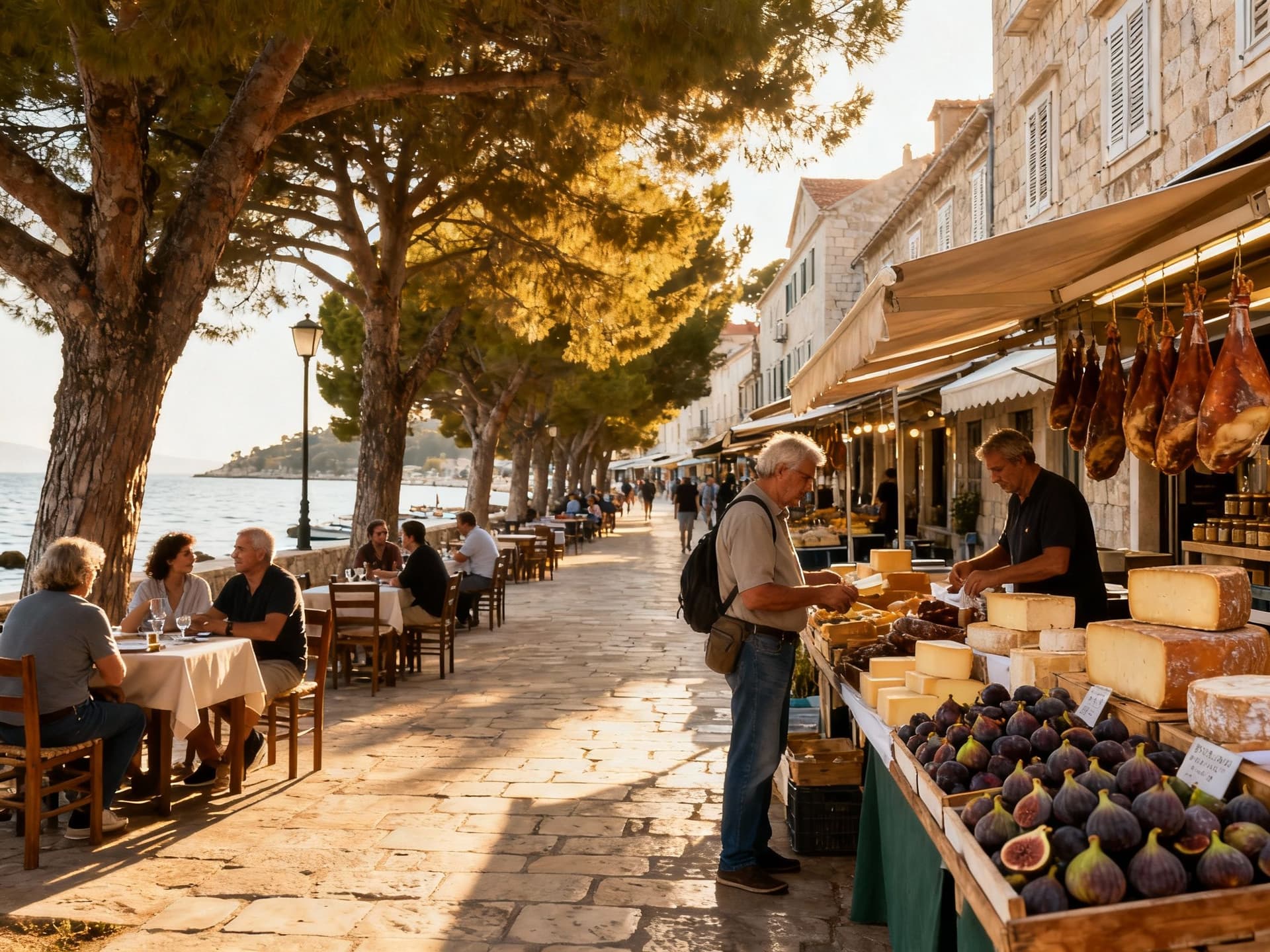Seasonal Finance: Timing That Lowers Mortgage Costs in Croatia
Seasonal timing in Croatia — shoulder‑season visits and off‑peak valuations can yield better mortgage terms, lower LTV risk and clearer long‑term costs.
Imagine arriving in Rijeka at the edge of September, when cafés hum again after the height of summer and market stalls brim with figs and smoked cheese. You walk narrow streets where stone facades still hold the warm memory of long afternoons; the mood is unhurried, the Adriatic luminous but not frenetic. For many international buyers, Croatia’s irresistible coastal charm — from the Venetian‑grain alleys of Rovinj to the broad boulevards of Split — is what sparks the dream. Yet this is where a quieter truth matters: seasonal rhythms, policy changes and local banking practices shape more than the tempo of life; they shape the cost and availability of finance. Buyers who align timing with market signals can materially alter mortgage terms, tax exposure and long‑term holding costs.
Living the Croatian rhythm — why season and finance are inseparable

Croatia’s property market moves with the year: an influx of tourists concentrates demand from June to August, while autumn and spring recalibrate local supply and seller expectations. Government data show meaningful price growth into 2025, but that growth is uneven across seasons and regions. For a buyer, that means financing is not only about choosing a lender — it is about choosing the month you begin talks, when the same property may meet different competition, appraisal practices and negotiable terms. Aligning purchase timing with off‑peak months often improves negotiating leverage on both price and credit conditions.
Coastal summer vs. Adriatic autumn — the lived difference
Summer in Dubrovnik and Hvar is theatrical: terraces spill over with visitors and sellers see brisk, high‑visibility demand. By contrast, September–November returns neighbourhoods to local life — fishermen, markets and families — and with that quieter market comes lenders who recalibrate risk appetite and surveyors able to inspect properties more thoroughly. This reduces the risk of appraisal anomalies and last‑minute financing surprises. For international buyers who prize refined living rather than transient yield, autumn offers clearer assessment of a property’s day‑to‑day character.
Food, markets and micro‑timing: why truffle and harvest season matter
Istria’s truffle season and inland harvests bring an influx of serious, long‑staying visitors — chefs, restauranteurs and estate seekers — who often inspect properties with precise lifestyle criteria. Their presence softens speculative short‑term demand and surfaces properties that genuinely support year‑round life. That clarity matters to banks assessing a property’s resale or rental profile, and it can translate into more favourable loan‑to‑value (LTV) assumptions and pricing for buyers who demonstrate a residence‑oriented intent.
Making the move: practical financing considerations that hinge on timing

Start by accepting that market statistics and policy moves are part of the scene. Official indices show continued house‑price growth through 2025; parallel conversations about property taxation and incentives influence lender risk models. Croatia’s recent tax discourse around shifting tax burden toward property owners affects holding costs and rental exemptions, which lenders may factor into affordability calculations. The good news is practical: with a well‑timed approach — often outside the high tourist months — you can secure clearer appraisals, more responsive local advisers and often a better financing conversation.
Property styles and how they change lender thinking
Stone‑built Dalmatian houses, Austro‑Hungarian period flats in Zagreb and contemporary villas designed for indoor‑outdoor life attract different underwriting assumptions. Banks scrutinise construction quality, access roads, ownership structure (single title versus co‑op), and the presence of short‑term rental history. A thoughtfully restored stone house in Korčula may be treated more favourably than a modern apartment used predominantly for tourist lets; the former implies durable demand from owner‑occupiers and a steadier resale profile.
Working with local experts who understand seasonal leverage
Experienced Croatian agents and mortgage brokers coordinate timing with lenders and valuers. They can advise when to commission surveys (often cheaper and quicker in shoulder months), when local notaries have capacity for swift closings, and when sellers are most inclined to accept conditional offers tied to finance. Their role is not promotional; it is strategic: they turn the rhythm of local life into negotiating advantage.
Insider knowledge: expats’ lessons about finance, language and local nuance
Some buyers arrive fluent in local procedure; many do not. Expats we spoke with emphasise one practical detail: demonstrate long‑term intent. Presenting a Croatian bank with a residency plan, reliable local tax adviser and clear plans for the property (primary residence, seasonal family use or long‑term rental under a local manager) reduces perceived risk. Coupled with seasonally aware timing — when local banks have liquidity after summer — this can materially improve LTV and interest offers.
Cultural integration, language and the finance conversation
Croatian banking staff appreciate concise dossiers: translated documents, certified income evidence and a local contact. A translator or bilingual broker at initial meetings is not affectation; it streamlines appraisal questions about the property’s use and ensures that small misunderstandings do not harden into financing conditions. In practice, the buyer who comes prepared will often secure more flexible terms.
Long‑term lifestyle considerations that affect finance
Think beyond purchase: local taxes, maintenance of stone façades, and seasonal occupancy patterns change long‑run cash flow. A property that is quiet in winter but marketable in summer may still require year‑round outlays; lenders often incorporate this into affordability tests. Plan conservatively for insurance, utilities and municipal charges — these are the line items that determine whether a mortgage remains comfortable across slower months.
- Lifestyle‑practical checklist for timing your financing
- Visit in shoulder months (Sept–Nov, Mar–May) to see neighbourhoods in everyday use
- Ask sellers for off‑peak valuation dates if appraisal was done in high season
- Prepare translated financials and a local contact to expedite bank review
- Insist on a physical inspection outside peak tourist days to reveal real‑life condition
- Step‑by‑step seasonal finance approach
- 1. Schedule a shoulder‑season visit to shortlist properties and meet lenders.
- 2. Commission a valuation and survey timed outside tourist peaks; submit those documents with your mortgage application.
- 3. Negotiate an offer that ties completion to lender approval and names a realistic timeline for notary and registry actions.
Red flags and practical traps — what I’ve seen buyers miss
- Short‑term‑rental history without declared income — lenders may reduce LTV or demand higher rates
- Appraisals performed in high season — inflated comparables can collapse once market normalises
- Assuming bank offers from your home country will transfer unchanged; local underwriting differs
- Neglecting local running costs (insula charges, communal maintenance, winter heating) when calculating affordability
Practical next steps — how to convert this clarity into action
If you are drawn to Croatian life, begin with a shoulder‑season reconnaissance. Bring translated financial documents, a clear statement of intent and engage a bilingual broker or mortgage specialist who understands seasonal liquidity cycles. Request valuations conducted outside peak months and structure offers conditional on lender approval. These straightforward choices convert the poetry of Croatian mornings and market stalls into a materially better financing result.
Conclusion — the costs of impatience and the virtue of rhythm
Croatia rewards the patient buyer: by aligning when you search with the seasonal cadence of life, and by presenting a coherent, locally attuned finance dossier, you reduce risk and often improve terms. The Adriatic’s beauty is an invitation; the financing conversation is the practical choreography that lets you live here with confidence. When you treat timing as part of your financing strategy, you pay less for the same view — and gain the quieter life that inspired the purchase in the first place.
Former Copenhagen architect who relocated to Provence, offering relocation services, market analysis, and a curator’s eye for authentic regional design.


